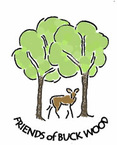
Buck Wood in the 20th Century
In 1906 Bradford Corporation purchased the Esholt Hall estate, which included Buck Wood and Buck Mill, to build a much needed sewage works.
The Corporation first allowed the public to ramble through Buck Wood in 1910, although some parts were closed off by fencing.
During 1912-1914 Ainsbury Avenue was constructed as a road leading to the new Esholt sewage works by the canal, thus forming the eastern boundary of Buck Wood.
Changes were made in the Wood, for example when the Open Air School was opened in 1908. Three decades later in 1938 a large section of Buck Wood was radically changed when it was decided to remove the native trees and plant conifers as a cash crop. Vociferous local protests ensured that only a limited area of the original woodland was destroyed, and regrowth has ensured that the planted area is now a mixture of native trees and conifers.
The conifers were never harvested as originally intended, and what could have been a devastating management plan for Buck Wood has, fortunately, led to greater diversity, and increased the variety of wildlife we can see in the Wood. As owners of Buck Wood, Bradford Metropolitan Council now acts in concert with the Friends of Buck Wood to try to ensure that the Wood is a haven for wildlife and an area for peaceful leisure for the local inhabitants – a long-earned tranquility after centuries of activity and exploitation.



